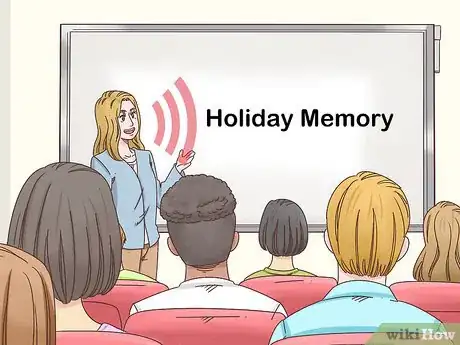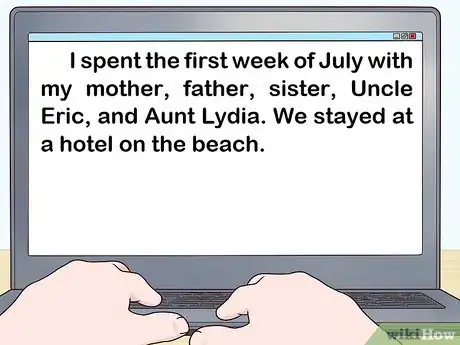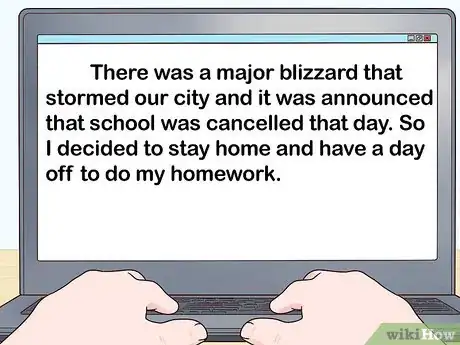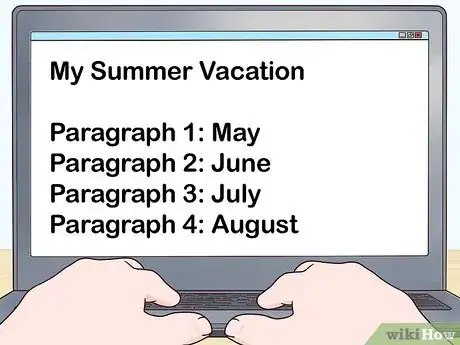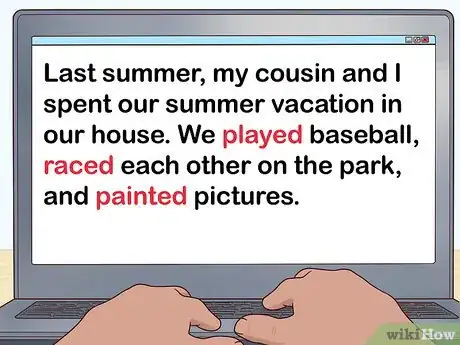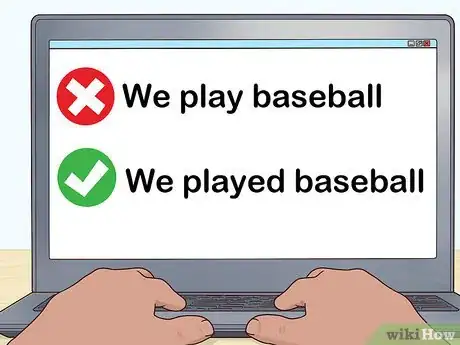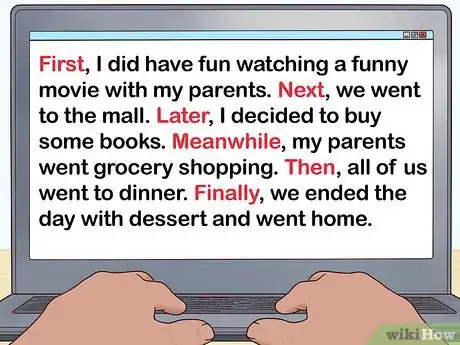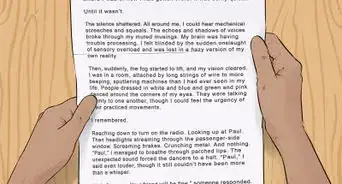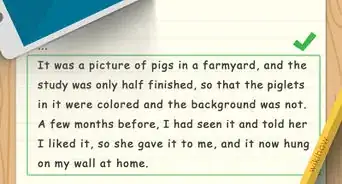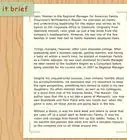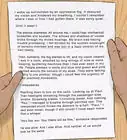X
wikiHow is a “wiki,” similar to Wikipedia, which means that many of our articles are co-written by multiple authors. To create this article, 13 people, some anonymous, worked to edit and improve it over time.
This article has been viewed 103,352 times.
Learn more...
Writing a personal recount requires you to retell an activity or event that happened in your own life. You must structure your story in a way that makes sense while using language that matches the same purpose.
Steps
Part 1
Part 1 of 3:
Considerations
-
1Follow the instructions. When writing a personal recount for an assignment, read the instructions several times until you know all of the requirements you need to meet.
- The first thing you need to understand is the writing prompt itself. If your teacher asks you to write about a favorite holiday memory, your recount needs to describe something that happened during a holiday. It should not describe a favorite memory that happened in school, after class on a normal school day, or during a normal weekend.
- Pay attention to requirements concerning length, as well. Your teacher may tell you how many words, pages, or paragraphs your recount needs to be. If these instructions are not included and you aren't sure about how long the piece must be, consider asking your teacher directly.
-
2Understand the purpose. Ask yourself what you hope to achieve by writing your recount. You need to accurately portray a real event you were personally involved in.
- Most recounts are meant to inform, entertain, or do some combination of the two. Personal recounts are generally written for entertainment, but if your teacher asks you to describe an event he or she was not present for—like what happened during your last sports game or during a time when a substitute teacher led class—you also need to make sure that you provide plenty of accurate information about that event.[1]
Advertisement -
3Know your audience. Think about your audience when writing your recount. Ask yourself what your audience might hope to gain or see from your writing.
- For classroom purposes, your recount will usually be written for either your teacher or your peers. Your teacher will want to see that you followed the instructions he or she provided. Your classmates will usually want to be entertained with a story they can enjoy or relate to.
-
4Watch the mood. Consider how your audience might feel after reading your recount. For instance, some stories might make the reader feel happy while others might make the reader feel sad. Make sure that the story you tell matches the mood you hope to put the reader in.
- For example, if you need or want to write a personal recount about a fun summer memory, you probably shouldn't write about your best friend moving away. As a sad memory, describing the loss of your friend won't create the “fun” mood your recount is supposed to have.
Advertisement
Part 2
Part 2 of 3:
Structure
-
1Pick an appropriate title. Most recounts have a title, and that title should summarize the text in a few words.
- Choose something simple. For instance, a recount about your favorite pet might be titled, “My Favorite Pet.”
-
2Set the orientation. The orientation includes all of the background details the reader will need to understand your story. You could also label the orientation as the "setting" of your story.[2]
- Identify the participants. Even though a personal recount must retell a story from your own life, other people will probably be involved in your story, too. Mentioning these individuals early on will prevent the reader from being surprised or confused later.
- Explain when the activity happened and where it happened, as well. These details are crucial if you want your readers to understand the events of your story.
- For example, if you choose to write about a beach vacation spent with your family, consider starting with something like, “I spent the first week of July with my mother, father, sister, Uncle Eric, and Aunt Lydia. We stayed at a hotel on the beach.”
-
3Recall and relay the correct sequence of events. Your recount should describe one significant incident, but each event or step that happened during that incident happened in a specific order. Make sure that you write those events in chronological order (the order they originally occurred in).[3]
- For instance, if school was canceled for the day because of a major blizzard, you should mention the blizzard first, followed by the discovery that school was canceled. Write about what you did with your day off only after explaining why you had that day off.
-
4Pick out important details. A lot may have happened during the activity you describe in your recount, but if you provide too many details, you can overwhelm or bore the reader. Stick with important details that push the story along instead of slowing it down.[4]
- As a general rule, only describe events that the reader would not be able to predict. When writing a personal recount about your weekend, you could describe the games you played, the people you met with, and any special treats you may have enjoyed. You do not need to explain that you went to sleep each night or ate breakfast each morning, however, since those are things your teacher expects you to do every weekend.
-
5Separate major parts into different paragraphs. Each major event in your recount should have its own paragraph. If you cram too many details into one paragraph, the story can seem cluttered and confusing.[5]
- For personal recounts that cover an extended period of time, each paragraph might describe one easily separated portion of that time. A recount about your weekend might include one paragraph for Friday evening, one paragraph for Saturday, and one paragraph for Sunday. A recount about your summer might include one paragraph for May, one paragraph for June, one paragraph for July, and one paragraph for August.
-
6Include descriptive details as needed. Descriptive details may not seem necessary at first, but they can help strengthen the image you're describing in the mind of your readers.[6]
- This is especially important when you are writing a personal recount about someone or something important. Personal recounts about your favorite pet should include a description of how your pet looks. Personal recounts about your grandparents should include descriptions of how your grandparents look and sound.
-
7Re-orient the reader. Near the end of the recount, you should note the setting again to tie things up and remind the reader of what you were describing.
- Consider including a personal opinion about what happened. For instance, you might say conclude a personal recount about your Christmas with a statement like, “This past Christmas was very fun.”
- You may also need to conclude by describing the outcome of the activity. If you are telling a recount about your visit to the doctor, end with an explanation of what your doctor told you or what medicine he or she gave you.[7]
Advertisement
Part 3
Part 3 of 3:
Language
-
1Opt for a first person point of view. Since personal recounts describe events that personally happened in your own life, you will need to use first person pronouns like "I" and "we."[8]
- For a personal recount, you need to describe how you felt and what you did. Doing this will be impossible if you do not tell the story from your perspective.
-
2Use plenty of verbs. A personal recount should describe events and activities that happened. To effectively describe such actions, you will need to use plenty of "action words," more formally known as "verbs."[9]
- For example, if you write about the games you played when your cousin visited you, you will need to state everything you did: “I played baseball,” “We raced each other to the park,” “My cousin and I painted pictures.”
- The words “played,” “raced,” and “painted” describe the actions you and your cousin performed.
- It makes more sense to say that you performed these actions than to describe these events without saying anything about doing them. A description of the park you raced to won't make sense if you don't first explain that you raced to it.
- For example, if you write about the games you played when your cousin visited you, you will need to state everything you did: “I played baseball,” “We raced each other to the park,” “My cousin and I painted pictures.”
-
3Write in past tense. The story you are telling happened in the past, so your recount will usually need to be told in past tense.[10]
- This means converting all of your verbs to the past tense. Instead of saying that you “enjoy” eating at your favorite restaurant, you will need to write that you “enjoyed” eating at your favorite restaurant.
- For most verbs, you can change them to the past tense by add “-ed” to the end of the verb. Examples include: enjoyed (enjoy), played (play), visited (visit), walked (walk)
- For some verbs, several letters within the word will change and no “-ed” is needed. A few common examples include: ran (run), ate (eat), went (go)
-
4Link events together. Use transitional words that link separate events together. Without these transitions, your recount may seem scattered and disconnected.[11]
- Transitions describe the order of events. A few examples include: first, next, later, meanwhile, then, finally
- Your recount might look something like this:
- First, I did _________.
- Next, we went to the ______.
- Later, I decided to ______.
- Meanwhile, my parents were ______.
- Then, all of us ______.
- Finally, we ended the day by ______.
Advertisement
Community Q&A
-
QuestionHow do I write a recount about a lost animal?
 Community AnswerWrite out a detailed timeline of all the time you've spent with the animal up to the point in which it was lost.
Community AnswerWrite out a detailed timeline of all the time you've spent with the animal up to the point in which it was lost. -
QuestionHow do I do a personal recount?
 Community AnswerWrite about how the event either changes your everyday life or influences you to make a choice. Follow the steps listed in the article above.
Community AnswerWrite about how the event either changes your everyday life or influences you to make a choice. Follow the steps listed in the article above. -
QuestionHow do I start the first sentence?
 Community AnswerStart by answering the 4Ws: Who, when, where, what.
Community AnswerStart by answering the 4Ws: Who, when, where, what.
Advertisement
References
- ↑ https://www.bbc.co.uk/bitesize/topics/z2yycdm/articles/z6698xs
- ↑ https://englishonline.tki.org.nz/English-Online/Planning-for-my-students-needs/Resources-research-and-professional-support/Features-of-text-forms/Recounts
- ↑ https://www.bbc.co.uk/bitesize/topics/z2yycdm/articles/z6698xs
- ↑ https://www.bbc.co.uk/bitesize/topics/z2yycdm/articles/z6698xs
- ↑ https://www.bbc.co.uk/bitesize/topics/z2yycdm/articles/z6698xs
- ↑ https://englishonline.tki.org.nz/English-Online/Planning-for-my-students-needs/Resources-research-and-professional-support/Features-of-text-forms/Recounts
- ↑ https://www.ziptales.com/pdfs/scripts/write-recount.pdf
- ↑ https://www.bbc.co.uk/bitesize/topics/z2yycdm/articles/z6698xs
- ↑ https://englishonline.tki.org.nz/English-Online/Planning-for-my-students-needs/Resources-research-and-professional-support/Features-of-text-forms/Recounts
- ↑ https://englishonline.tki.org.nz/English-Online/Planning-for-my-students-needs/Resources-research-and-professional-support/Features-of-text-forms/Recounts
- ↑ https://englishonline.tki.org.nz/English-Online/Planning-for-my-students-needs/Resources-research-and-professional-support/Features-of-text-forms/Recounts
About This Article
Advertisement
